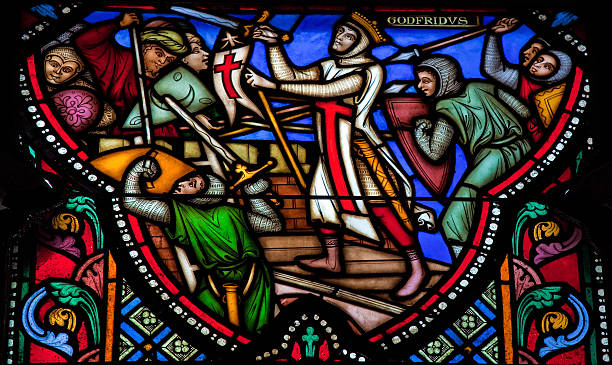During the Crusades (1095–1300 CE), European armies not only fought for control of the Holy Land but also came into contact with the advanced economies of the Middle Eastern gold coins. The gold dinar of the Islamic Caliphates and the Byzantine hyperpyron were the dominant trade currencies of the region, widely used across North Africa, the Middle East, and parts of Europe. As Crusaders engaged in trade, ransom payments, and plundering, these Middle Eastern gold coins began to influence European monetary systems. Over time, European states—especially the Italian city-states—adopted gold coinage models, minting techniques, and financial systems from the Middle East, leading to the reintroduction of gold-based currency in medieval Europe.
Through trade, war, and diplomacy, European merchants and rulers adopted gold coinage models, financial practices, and minting techniques from the Middle East, leading to the reintroduction of gold coinage in Europe for the first time since the fall of the Western Roman Empire.

Middle Eastern Gold Coins That Influenced Europe
1. The Islamic Gold Dinar
The gold dinar, introduced by the Umayyad Caliphate in 696 CE, was the dominant gold coin in the Middle East and North Africa. During the Crusades, European rulers and merchants encountered Islamic dinars in trade, ransom payments, and plunder.
- Crusader States in the Levant (1099–1291 CE) used Islamic dinars in local commerce due to their stability and gold purity.
- Italian merchants from Venice, Genoa, and Pisa frequently traded with the Islamic world, acquiring gold dinars and adopting their coinage standards.
- Some European states even minted coins modeled after Islamic dinars, imitating their weight and gold content.
2. The Byzantine Gold Hyperpyron (Reform of the Solidus)
The Byzantine solidus, once the standard gold coin of Europe, had declined due to debasement. However, during the Crusades, Byzantine Emperor Alexios I Komnenos (r. 1081–1118 CE) reformed the empire’s currency, introducing the gold hyperpyron.
- The hyperpyron became a key trade coin between Byzantium, the Crusader States, and Western Europe.
- Crusaders used Byzantine gold to finance their campaigns and trade in the Eastern Mediterranean.
3. The Imitation Dinars of Crusader States
The Crusader rulers of the Kingdom of Jerusalem, Antioch, and Tripoli found Islamic gold dinars so widely accepted that they minted their own versions.
- The gold bezant, minted in Crusader territories, closely resembled the Islamic dinar.
- Some Crusader coins even featured Arabic inscriptions to ensure acceptance in local markets.
The Reintroduction of Gold Coinage in Europe
Exposure to gold-based economies in the Middle East and Byzantium convinced European states to reintroduce gold coinage after centuries of relying on silver.
Italian City-States Lead the Way
- Florence (1252 CE) – Introduced the gold florin, one of the most stable and widely used European gold coins.
- Venice (1284 CE) – Minted the gold ducat, which became the dominant trade coin in Europe and the Mediterranean.
These new European gold coins were directly inspired by the Middle Eastern dinar, both in weight and design, marking a turning point in medieval European monetary history.
Conclusion: The Lasting Economic Impact of Middle Eastern Gold
The Crusades reconnected Western Europe to the gold-rich economies of the Islamic world and Byzantium, leading to:
✅ The adoption of gold coinage after centuries of silver dominance.
✅ The introduction of new minting techniques and financial systems.
✅ The rise of powerful trade networks linking Europe to the Middle East and North Africa.
By 1300 CE, the influence of Middle Eastern gold coins was evident across Europe’s emerging financial centers, setting the stage for the later gold-based economy of the Renaissance.
